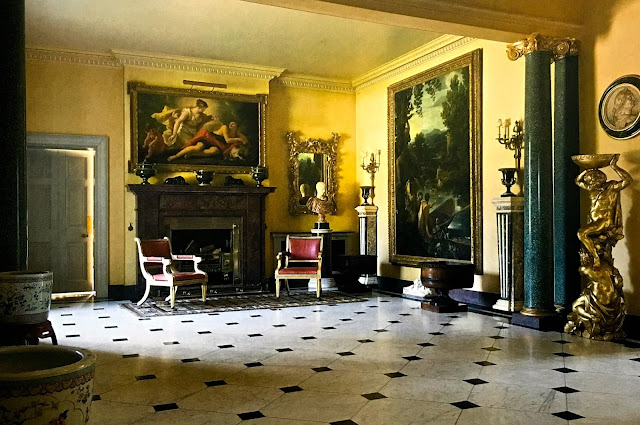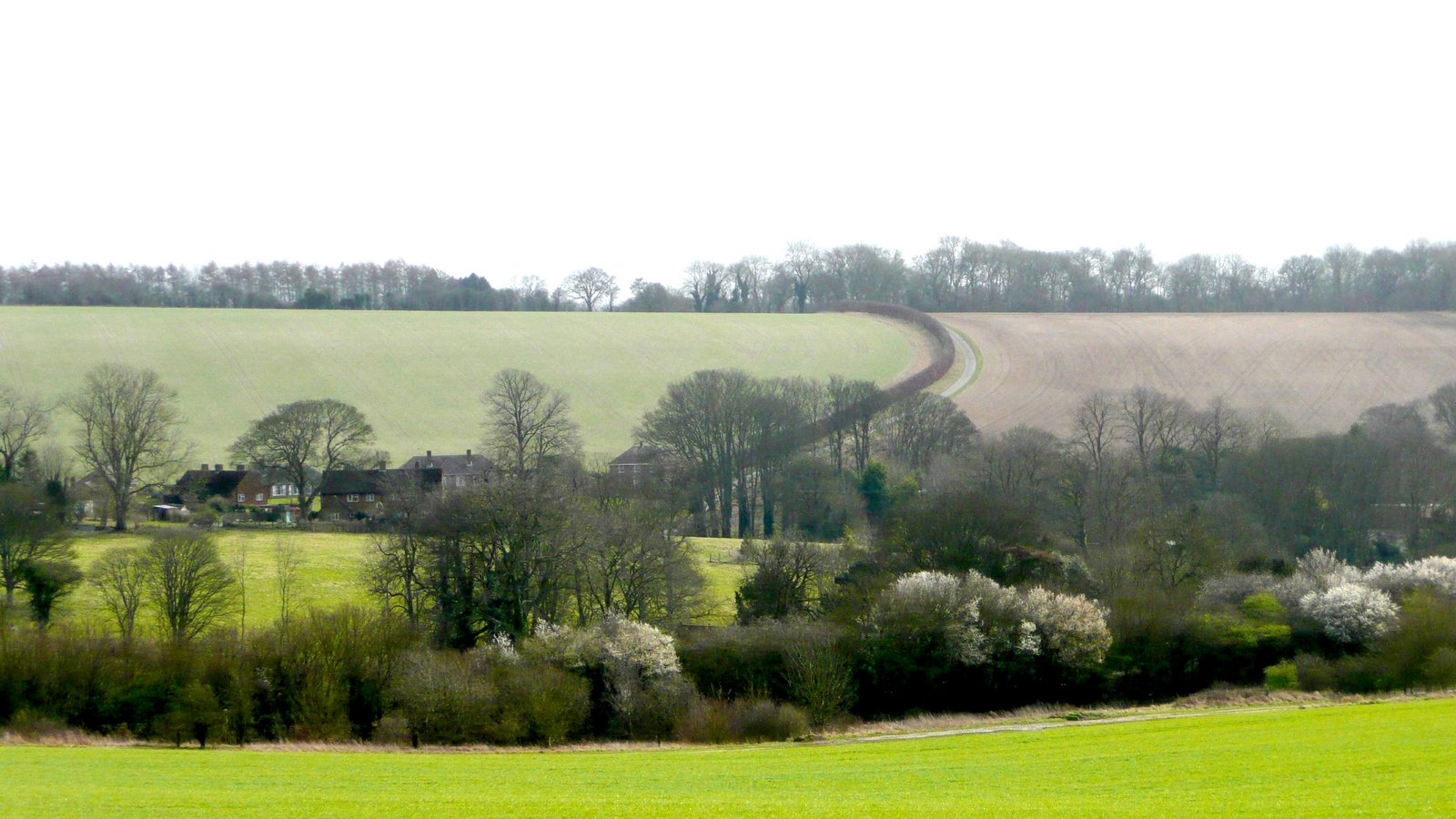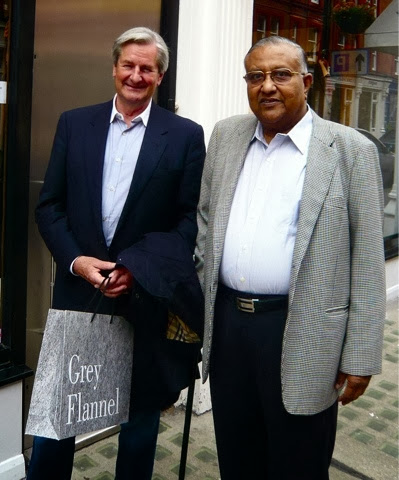 |
| Gules Wingate-Saul (right) with Julian Avery, John Collard and Richard Smith. Anglesea Arms, London 2026 Photo by Herry. |
Giles Wingate Wingate-Saul was a friend from my schooldays when we were contemporaries at Winchester. We subsequently attended university together and for our last year at Southampton (where we both read law) we shared a cottage with Julian Avery (3rd from the left) on the edge of the New Forest outside Romsey.
 |
| Julian, John, Richard, Giles and Herry at Blue Hayes in 2011 |
At university and subsequently we were both members of the 'Gentleman of Wessex' cricket team, and we met at cricket matches and events such as the reunion organised by Julian Avery at the Royal Thames Yacht Club in 1995. We both retired in 2006, but the both attended the reunion organised by tbe Law Faculty in 2007 where Giles was called upon to reply on behalf of the students.
 |
| Southampton Law Faculty Reunion 2007 - with Giles, Julian, John, Richard and others including some of tbe professors. |
I think it was at that event that we determined to have an annual reunion consisting of Giles, Julian, John Collard and me, and later Richard Smith. Thereafter we met annually in London or in Hampshire for lunch or dinner, often at one of the London Clubs (Julian was a member of Boodles). I also began to see Giles on other occasions as he came down from Cumbria to visit his daughter Lucinda, who was working as a doctor at Winchester Hospital. He came to stay at Old Swan House on occasion and we enjoyed long discussions, having similar views on life and the world. He also came with me to Litchfield, and amazed the congregation with his beautiful baritone voice. I hope we would always be able to meet, but that was not to be, as Giles fell ill in about 2017 and was unwell until he died in September 2021
At Gile's Thanksgiving Service in his home village of Rusland on a friend, David Allan QC gave a fine eulogy that appears here:
'I met and got to know Giles in the mid 1970s, not through meeting in Court or in chambers but through Giles being the organiser and captain of the Manchester Bar football team. A team that under Giles’s captaincy played regularly and met with much success. Giles was a solid centre back but if the truth be told he was a little susceptible to the high ball. As a high ball came towards him it was not unknown to hear a cry from Giles “over” and as the ball sailed over his head that was the signal for Giles’s fellow centre back to provide some rapid cover. Those who played for that team got enormous enjoyment from doing so and are grateful to Giles for creating and running the team.
Giles’s school was Winchester College, his university was Southampton where he read law . Giles was rather dismissive of his achievements as a student. I have chatted to Herry Lawford who was at school and university with Giles. Herry is here today. What Herry emphasised was not so much Giles’s academic abilities but the value of his friendship which lasted a lifetime. Giles was a loyal and entertaining friend, he was a great storyteller.
Giles was called to the Bar in 1967 and joined Royal Exchange chambers in Manchester. He rapidly developed a very busy civil practice but was never too busy to help a fellow member of chambers. A few days ago I bumped into Keith Armitage who was also a member of Royal Exchange. Giles was some 2 or 3 years senior to Keith and when Keith was a pupil and in his second six months and so able to appear in Court it happened that late one day he received instructions to go to Warrington County Court on an undefended divorce. The petitioner was seeking a divorce on the grounds of adultery. This caused Keith some consternation Not because of the adultery but the prospect of the journey to Warrington. There was no M56 or M62 to take you to the wilds of Warrington. So Keith approached Giles and suggested that Giles might like to take over this weighty undefended divorce. Giles’s response was to say no this is your case and you must do it but I will drive you to Warrington County Court and I will drive you back again to Manchester. Giles did just that. Keith got his lift but sadly did not get his divorce. Undefended it may have been but he could not prove adultery. What struck me on hearing this story from some 50 years ago how like Giles and how he never changed. Kindness and doing the right thing were so much a part of his character.
I forgot to ask Keith what car Giles was driving. Was it his splendid and beloved Lotus.
Giles’s abilities as a barrister, his talent and hard work were recognised and he achieved silk in 1983 becoming a Queen’s Counsel just after his 38th birthday, an unusually young age to achieve . He joined Byrom Street Chambers in Manchester and London. The head of Chambers was Ben Hytner. Taking silk at the same time as Giles and joining Byrom Street with him was Giles’s friend David Clarke. I’m reminded of David’s description of Giles: intellectually principled, rigorous, focused but also warm in friendship and very good company.
As a silk Giles was always in demand. He combined meticulous preparation and fine judgment with an unerring grasp of legal principle. Giles was the master at drilling down into a case to reveal its key points. His practice covered both claims for catastrophic injury and weighty commercial matters. When acting for a claimant if the defendant was not prepared to pay the value of the case as assessed by Giles then he was always ready to fight the case. In Court he was a formidable presence. He advanced his arguments cogently and forcefully.
You’ll know that Giles had a strong sense of fairness. In the conduct of his cases at whatever level whatever the eminence of the tribunal Giles would stand up to what he saw as an unfair approach. He felt his nemesis was a particular law lord of brilliant intellect but with a tendency to make up his mind before coming into court. I know you are thinking that couldn’t possibly happen but it did. And then displaying a reluctance to listen to the argument he had already in his own mind rejected. This infuriated Giles.
What gave Giles great satisfaction was to receive instructions in an unpromising case and then having mastered the detail, analysed the issues he would fashion an argument that provided the route to success. This was never better illustrated than in the environmental asbestos case Margereson where the citizens of Armley Leeds were subjected through the 1930s, 40s and 50s to an asbestos factory pumping out asbestos dust into their homes, into the school yard and onto the loading bays where the children played. During 6 weeks of evidence and argument I was privileged to watch Giles construct an unanswerable case. His dedication to the case was total.
I had the good fortune to be led by Giles many times. It was an education. Those of us who shared chambers with Giles benefited enormously from his wise advice.
Giles’s energies were not confined to the conduct of his own cases. Giles was the founding Chairman of the Northern Circuit Commercial Bar Association. He was always keen to assist law students and young members of the Bar and he did that through his role as a Bencher of the Inner Temple.
Giles retired from the Bar aged 60. He had been a deputy High Court Judge and a Deputy Judge of the Technology and Construction Court. He could undoubtedly have become a High Court Judge and given the combination of his first class legal mind and his humanity he would have been a fine judge. But he and Katherine had agreed many years ago that he would retire at 60 and he never wavered from that decision.
Despite the demands of work and family Giles found time to assist certain charities whose work he regarded as important. He was a trustee for some 20 years of Spirit, the charity for those sustaining spinal cord injury, and he was also a trustee of the Bendrigg Trust based in Cumbria which provides outside adventure activities for the disabled and disadvantaged.
At the Bar Giles was regarded with huge respect and admiration. This was in part due to his abilities as a barrister but also in part because of the person he was. There was nobody else quite like him. He was no follower of popular fashion. He never owned a television. He was very much his own man- a singular man and he was fortunate to meet a singular woman in Katherine and unsurprisingly they produced two wonderful children in Lucinda and Rupert. He was immensely proud of both of them. I’ll finish with some words written by his lifelong friend Herry Lawford:
“A lovely, kind man and a generous friend; the kind you hope to grow old with”
GILES WINGATE-SAUL Called to the Bar November 1967 (Inner Temple). Practice as barrister 1967-1983. General Common Law work from chambers in Manchester (mainly civil). Queen’s Counsel (QC) Appointed April 1983. Practice as Queen’s Counsel 1983-2005 from chambers in Manchester and London. Areas of work - catastrophic personal injury (brain damage and spinal injury)\, Mercantile/Commercial/ and Construction. Mediator (trained by CEDR) Arbitrator Retired 31st July 2005 Appointments. Deputy High Court Judge (ceased July 2005) Deputy Judge of Technology and Construction Court (ceased July 2005). Governing Bencher of the Inner Temple. Specialist Bar Associations (until 2005) Personal Injury Bar Association. Northern Circuit Commercial Bar Association (Founding chairman and chairman 1996-2002). Professional Negligence Bar Association.Technology and Construction Bar Association. Society of Construction Law. Bar European Group. European Circuit.
Divided time between the Lake District and Manchester. Governing Bencher of the Inner Temple. Trustee of SPIRIT (spinal injury charity based on Midland Spinal Injury Centre. Oswestry) Trustee of Bendrigg Trust (residential activities for disabled young people. Founding Trustee/Administrator of Rusland Valley Community Trust. Churchwarden / Treasurer Rusland Church, Cumbria.Vice-chairman Rusland Show. Treasurer Rusland Reading Room Member Carlisle Diocesan Synod. Deputy groundsman Leven Valley Cricket Club. Cricket/tennis
Family: wife Kathrine (died 2015) Daughter Lucinda attended Leeds University and is now a doctor at Royal County Hospital, Winchester, married to Tom with a son. Son Rupert was at Cambridge (Engineering) and is marrying Laura in Rusland.
Photos from the Thanksgiving Service can be seen here
For some more photos of Giles though the years, click here
























